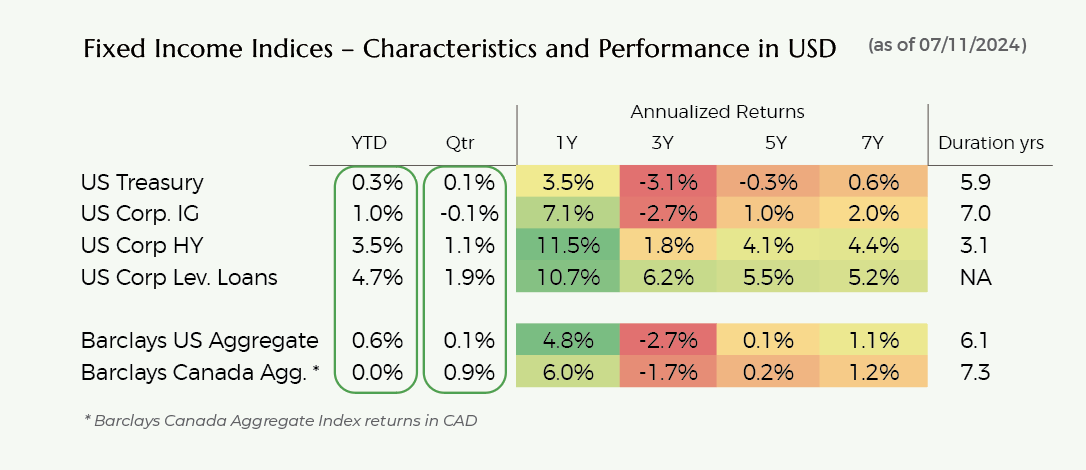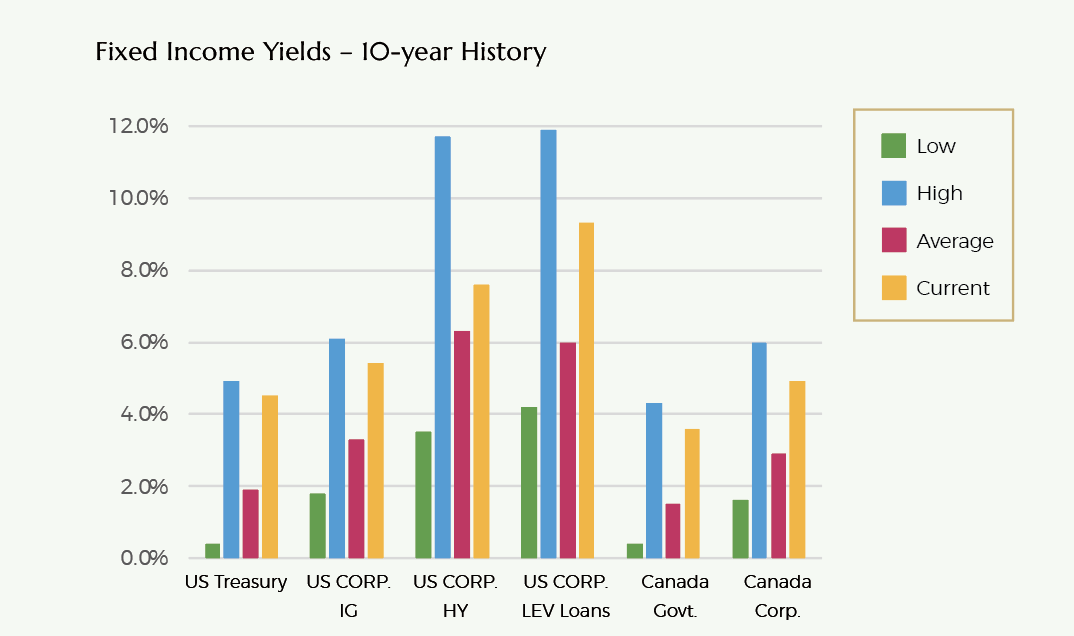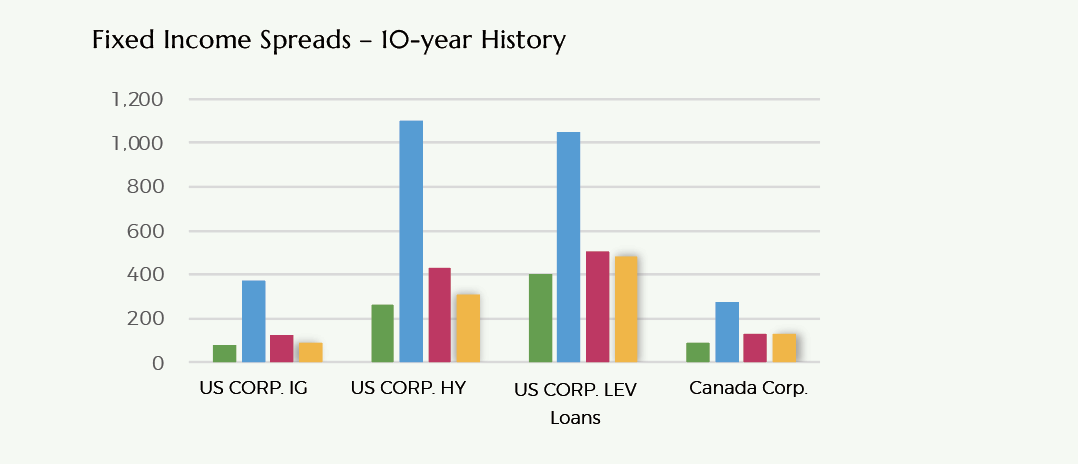Performance
Performance of safe fixed income (government bonds and corporate investment grade bonds) was relatively flat during Q2 and modestly up YTD.
The bond market experienced high volatility throughout the quarter as bond yields surged upwards in April (given higher-than-expected inflation and job market data) before sharply retreating as inflation data proved more favorable in May and June, and the labor market cooled considerably.
Yields increased by 40bps-50bps across parts of the Treasury curve in April from March levels before retreating 50bps-60bps through July 11th.
Both high-yield bonds and leveraged loans performed well in Q2 and YTD.
HY bonds benefitted from high coupon rates in Q2 with relatively stable spreads.
BB and single-B-rated bonds outperformed CCC-rated (lower quality) bonds during Q2. YTD and CCC-rated bonds have outperformed BB and B bonds by 125bps.
Leveraged loans (floating rate) have benefitted from high coupon rates (driven by high SOFR base rates of 5.3% coupled with stable spreads).

Valuation
Safe fixed-income (government- and investment-grade corporate bonds) yields remain attractive.
US Treasuries are yielding roughly 4.9%, 4.4% and 4.2% for 1-year, 2-year, and 10-year maturities.
US corporate investment grade bonds are now yielding 5.3% (with risk of default very low).
Both investment grade (IG) and high-yield bond spread premiums remain tight, reflecting strong corporate earnings performance despite high interest rates.
IG spreads are currently at 90bps, and HY spreads are at 310bps. These levels are well below the 10-year averages of 125bps and 425bps, respectively.
Spreads have generally widened further during prior recessionary periods (200bps for corporate bonds and 800bps for HY bonds).
However, the quality of the high yield index is much stronger now than in previous periods. When coupled with today’s high base rates, it is unlikely that spreads will widen to those experienced in previous recessions (even if economic activity slows substantially).
Competition is intensifying for lenders to the large-borrower segment while competitive dynamics remain more benign for middle-market lenders.
Large corporate borrowers have ample access to credit availability via banks or large private lenders.
Following a pause in late 2022 through mid-2023, large banks have increasingly re-entered the leveraged loan market, and new issuance spreads at the large end of the market have contracted by 125bps to 150bps. Covenant packages are weakening again.
On the other hand, lower-middle-market and middle-market companies face constraints regarding capital access.
Regional banks have pulled back substantially from lending to these companies. As such, spreads to these borrowers have not contracted as much (only 50bps-75bps) relative to the larger borrowers.



